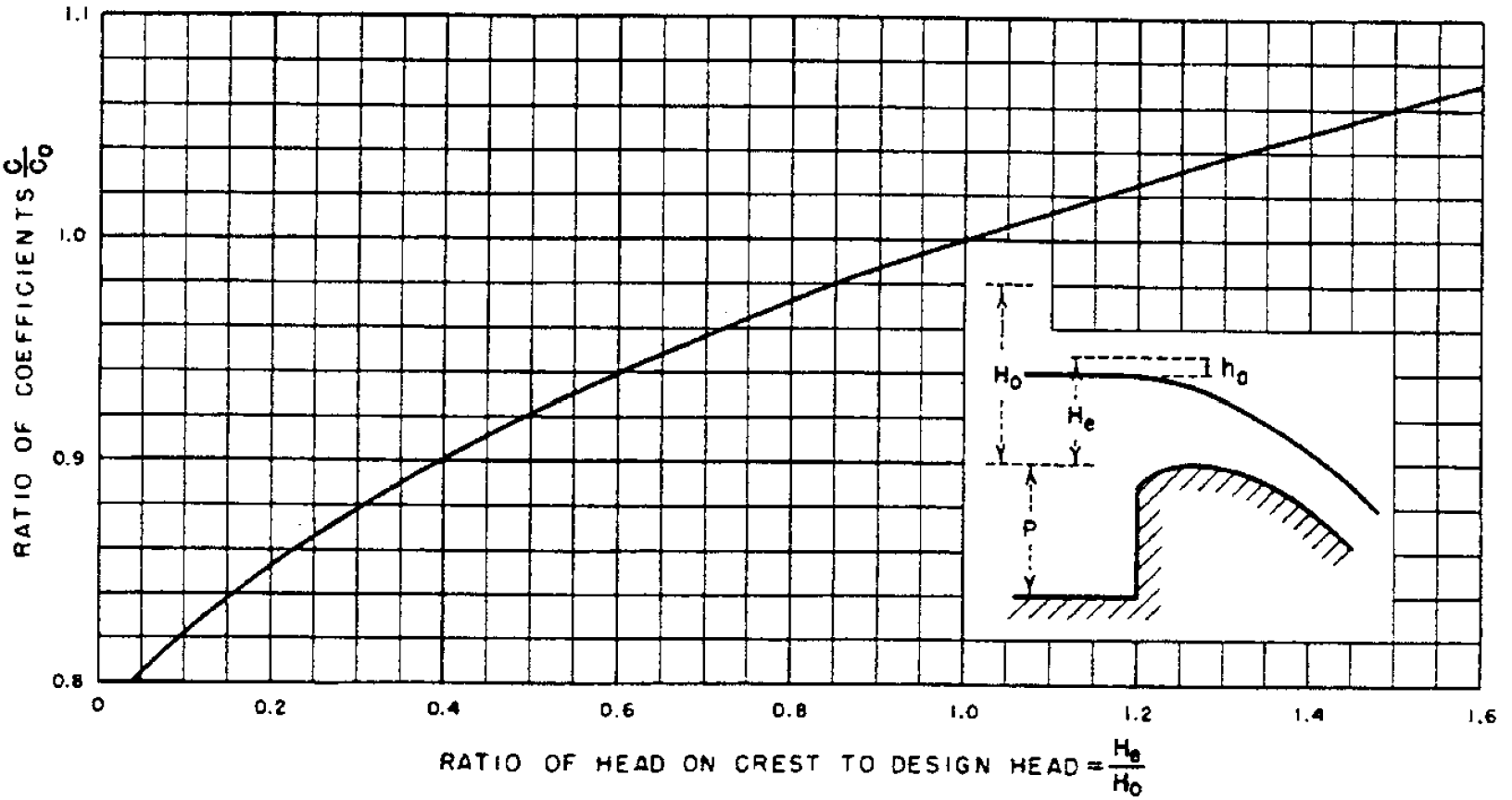In addition to the gate openings, the user can define an uncontrolled overflow weir at the same river crossing. The weir could represent an emergency spillway or the entire top of the structure and embankment. Weir flow is computed using the standard weir equation (Overflow Gates:1). The uncontrolled overflow weir can be specified as either a broad crested, ogee shaped, or sharp crested. The selection of a weir shape does not limit the modeling of other weir shapes. The limiting factor is what is entered for the weir coefficient. So the user can model other than the three listed weir shapes, by simply entering an appropriate weir coefficient. The selection of a weir shape does, however, fix how the program will calculate submerged weir flow.
Additionally, if the weir is ogee shaped, the program will allow for fluctuations in the discharge coefficient to account for upstream energy heads that are either higher or lower than the design head (see figure below).

For weir flow in which the Sharp Crested spillway crest shape is selected, the user has the option of using the standard weir equation, the Rehbock equation (Henderson, 1966), or the Kindsvater and Carter equation (1957). If the standard weir equation is selected, the user must enter a weir coefficient. If either the Rehbock or the Kindsvater and Carter equation are selected, then the weir coefficient will automatically be calculated.
The following table is a list of typical weir coefficients for various shapes of weir crests:
Table 8-1 Typical Overflow Weir Coefficients
Weir Crest Shape | Typical Coefficient Range |
|---|
Broad Crested | 2.6 - 3.1 |
Ogee Crested | 3.2 – 4.1 |
Sharp Crested | 3.1 – 3.3 |